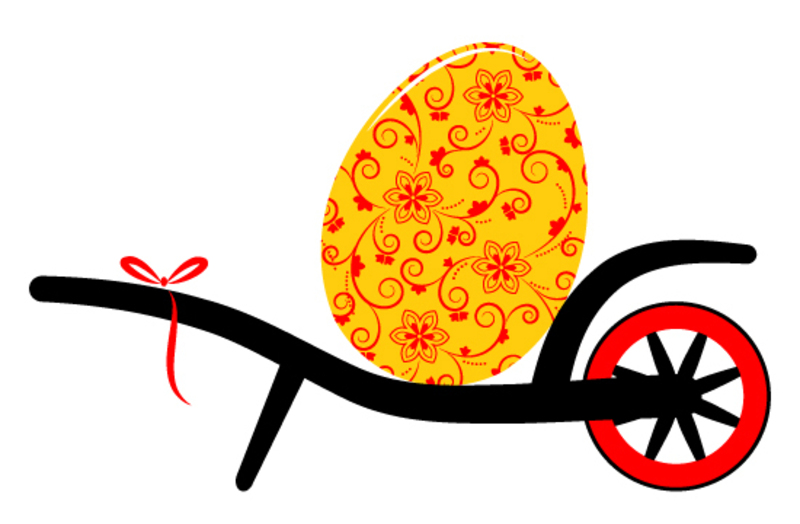Optimizing Your Form with Kinetic Lifting Strategies
When it comes to achieving peak performance and avoiding injuries in your fitness journey, kinetic lifting strategies are indispensable. By understanding how to optimize your form, you can transform the way you lift, gain better results, and enjoy a safer training experience. In this comprehensive guide, we'll explore the science behind kinetic movement, practical tips for perfecting your form, and the key methods to make every lift more effective. So, let's dive into the world of optimizing your form with kinetic lifting strategies!

Understanding the Science of Kinetic Lifting
Kinetic lifting refers to the application of biomechanical principles during resistance training. It involves harnessing the body's natural movement patterns, muscular chains, and energy transfer dynamics to lift more efficiently and safely. The goal is to ensure that every rep is as productive as possible, minimizing the risk of strain and maximizing muscle engagement.
What is Kinetic Lifting?
Kinetic lifting is more than just moving a weight from point A to point B; it's about performing every lift with optimal body alignment, deliberate speed, and controlled force. This strategy leverages the body's kinetic chain--a sequence of joints and muscles that work together to produce movement. By identifying and optimizing these movement patterns, lifters can increase their lifting efficiency and achieve better gains.
- Kinetic Chain Awareness: Recognize how your body segments synchronize during a lift.
- Energy Leaks: Identify weak points or improper form that dissipate energy.
- Muscle Engagement: Activate target muscle groups and stabilizers effectively.
Why Is Proper Form Important?
Optimized form is crucial for several reasons:
- Injury Prevention: Reduces the risk of strains, tears, and chronic pain.
- Maximized Muscle Activation: Ensures that you're working the intended muscles optimally.
- Improved Performance: Enables you to lift heavier safely and build more strength.
- Consistent Progress: Paves the way for steady, long-term gains without setbacks.
Core Principles of Kinetic Lifting Strategies
To excel in kinetic lift optimization, you must focus on several foundational principles. Applying these core tactics in every workout ensures your efforts lead to maximum results.
1. Maintain Neutral Alignment
**A neutral spine and aligned joints are the foundation of proper kinetic function.** Whether you are performing a squat, deadlift, or overhead press, maintaining a solid alignment is vital. It keeps muscles engaged effectively and prevents undue stress on ligaments or discs.
- Keep your chin tucked and gaze forward.
- Draw your shoulder blades back and down.
- Maintain a straight back--avoid rounding or arching excessively.
- Align your knees with your toes during lower body lifts.
2. Control Your Range of Motion
Overextending or cutting the range of motion short can undermine your progress. With kinetic lifting optimization, focus on a full yet controlled movement arc. Avoid "cheating" by bouncing at the bottom or hyperextending at the top.
- Lower the weight slowly, emphasizing the eccentric (lengthening) phase.
- Pause briefly at transitional points to eliminate momentum.
- Complete each rep with deliberate power through the concentric phase.
3. Engage the Core
A strong, braced core is essential for lifting form optimization. Your core acts as a stabilizer, protecting your spine and enhancing power transfer through your kinetic chain.
- Take a deep breath into your belly (not your chest) before each lift.
- Brace your abdomen--imagine preparing to take a punch.
- Maintain core engagement throughout every repetition.
4. Synchronize Breath and Movement
Proper breathing boosts your stability, control, and strength production. Coupling your breath with kinetic movement ensures you stay stable and powerful during heavy lifts.
- Inhale before the rep, filling your belly with air.
- Hold or "brace" during the most intense part of the lift.
- Exhale as you complete the concentric phase or return to the starting position.
Essential Kinetic Lifting Techniques to Improve Your Form
Now let's explore some key kinetic lifting strategies that you can implement in your training for superior form and performance.
Mastering Compound Movements
Compound exercises--those that work multiple joints and muscle groups--should be at the core of your program. Movements such as squats, deadlifts, presses, and rows require coordinated effort across the kinetic chain, demanding precise form and control.
- Squats: Sit back using your hips, keep knees in line with your toes, and drive up through your heels. Maintain an upright chest and rigid core.
- Deadlifts: Hinge at the hips while maintaining neutral alignment. Engage the lats and pack the shoulders to stabilize your spine.
- Overhead Press: Keep the bar close, contract your glutes, and brace your core throughout the lift, pressing in a straight line above your shoulders.
- Rows: Retract the shoulder blades, use your back muscles to initiate each pull, and avoid jerking or swinging the weight.
Using Tempo Training
Tempo training is a powerful strategy within kinetic lifting optimization. By manipulating the time you spend in different phases of a lift, you can refine technique, build control, and stimulate muscle growth.
- Lower weights over 3-4 seconds for greater muscle tension.
- Pause for 1-2 seconds at the hardest part of the movement.
- Execute the upward portion dynamically, but with control.
Optimize Grip and Stance
Grip and stance are often overlooked in lifting form optimization but are critical to force production and injury prevention.
- Use a grip width that allows your arms to move naturally.
- Adjust your stance (narrower or wider) based on your limb proportions and comfort.
- For pulling movements, consider mixed grip to prevent rotational forces.
Fine-Tuning Your Lifting Form: Cues and Corrections
Honing your lifting form is a journey of continuous improvement. Here are actionable cues and corrections to refine your kinetic lifting approach and avoid common pitfalls.
Watch Yourself Perform
- Use mirrors or film yourself: Identify breakdowns in alignment and technique you might not feel during training.
- Check for compensations: Are your knees caving in during squats? Are your shoulders shrugging on deadlifts?
Focus on Mind-Muscle Connection
- Be intentional: Visualize the muscles you're targeting. Are they firing first, or are synergists doing the work?
- Slow down: Quality over quantity. Control every inch of every rep.
Listen to Your Body
- If you feel joint pain or abnormal discomfort, stop and reassess your form.
- Fatigue is normal, but sharp pain is not--don't push through pain when optimizing lift mechanics.
Common Mistakes in Kinetic Lifting Form and How to Avoid Them
Even experienced lifters can fall into bad habits. Here's how to spot and fix the most frequent form blunders as you optimize your kinetic lifting strategies.
- Rounded Back: Maintain a neutral spine. Focus on bracing your core and retracting your shoulder blades.
- Uneven Weight Distribution: Keep your weight balanced across your feet--don't shift to toes or heels excessively.
- Poor Bar Path: Practice drills with lighter weights to engrain the best trajectory (especially for Olympic lifts).
- Elbows Flaring: Tuck elbows in on presses and rows for shoulder safety and power.
- Cheating the Range: Use only as much weight as you can control. Partial reps from excessive load undermine your gains.
Optimizing Programming for Kinetic Lifting Efficiency
Beyond form, your overall training program influences how well you apply kinetic lifting tactics. Here's how to program your routine for ongoing improvement:
- Progressive Overload: Gradually increase weight, reps, or sets while maintaining flawless form.
- Frequency: Practice key lifts several times weekly to build consistent movement patterns.
- Assistance Exercises: Include unilateral or stabilization exercises to address weaknesses in the kinetic chain.
- Rest and Recovery: Allow adequate recovery so that neural patterns and muscle tissue adapt optimally.
Advanced Kinetic Lifting Strategies for Seasoned Lifters
Once you've mastered the basics, it's time to elevate your training with advanced kinetic lifting optimization techniques. These strategies challenge your coordination, control, and power output for even greater results.
Explosive Lifting and Plyometrics
Incorporate explosive lifts (such as power cleans, snatches, or jump squats) to train your fast-twitch muscle fibers and nervous system for higher force production.
- Start with basic plyometric moves to build confidence.
- Keep reps low but intensity high to avoid technical breakdown.
- Always prioritize form over speed or load.
Unilateral Movements and Instability Training
Executing lifts with one limb or on unstable surfaces forces your body to correct imbalances and improve core activation, enhancing your overall kinetic efficiency.
- Try single-leg squats, lunges, or single-arm presses.
- Use resistance bands or suspension trainers to add variability.
Load Variation and Wave Loading
Change the resistance or speed of your lifts within a single session to challenge motor learning and adaptation.
- Alternate heavy and lighter sets to maintain sharp technique under various loads.
- Experiment with contrast sets (e.g., heavy squats followed by jump squats).

Recovery and Mobility for Form Optimization
Optimizing your form with kinetic lifting strategies doesn't end when you leave the gym. Proper recovery and flexibility work allow the body to reset and improve movement patterns for future training sessions.
- Dynamic Warm-Ups: Prepare your body for lifting with mobility drills and activation exercises.
- Stretching and Foam Rolling: Implement post-training stretching and myofascial release to maintain range of motion and reduce tightness.
- Active Recovery: Use walking, swimming, or yoga to enhance blood flow and muscle repair.
Conclusion: Make Every Lift Count with Optimized Kinetic Strategies
By prioritizing kinetic lifting strategies in your training, you set yourself up for stronger, safer, and more consistent progress. Remember, proper form is the linchpin of success--enhancing muscle growth, preventing injury, and unlocking your true performance potential. Keep learning, stay attentive to your technique, and embrace the art of form optimization in every session.
Start your journey today by applying these kinetic lifting optimization methods--whether you're a beginner or an experienced athlete. Over time, you'll not only see and feel the difference in your lifts but also in your overall strength, posture, and confidence.
Lift smart, stay fit, and make every rep count with kinetic lifting strategies!



